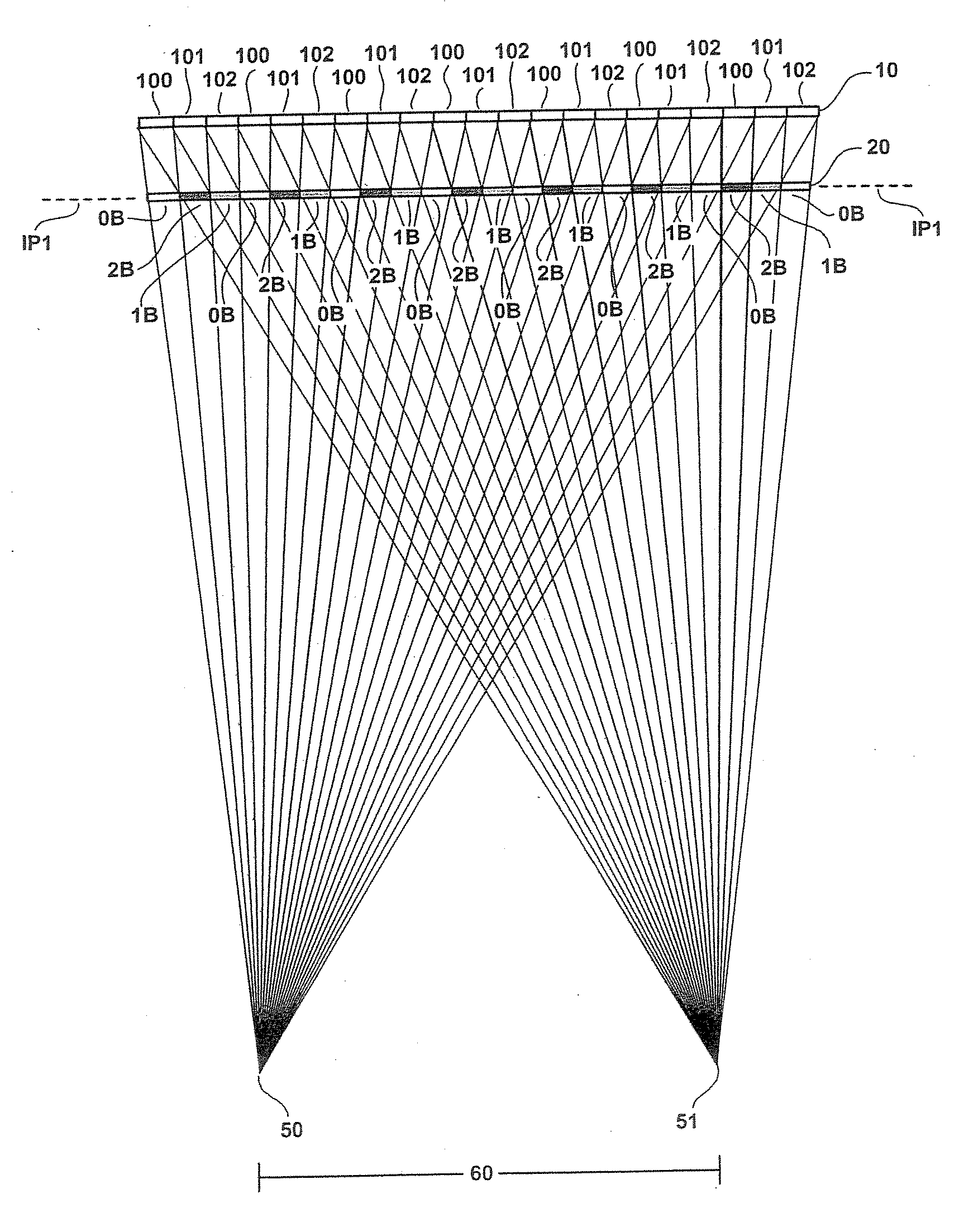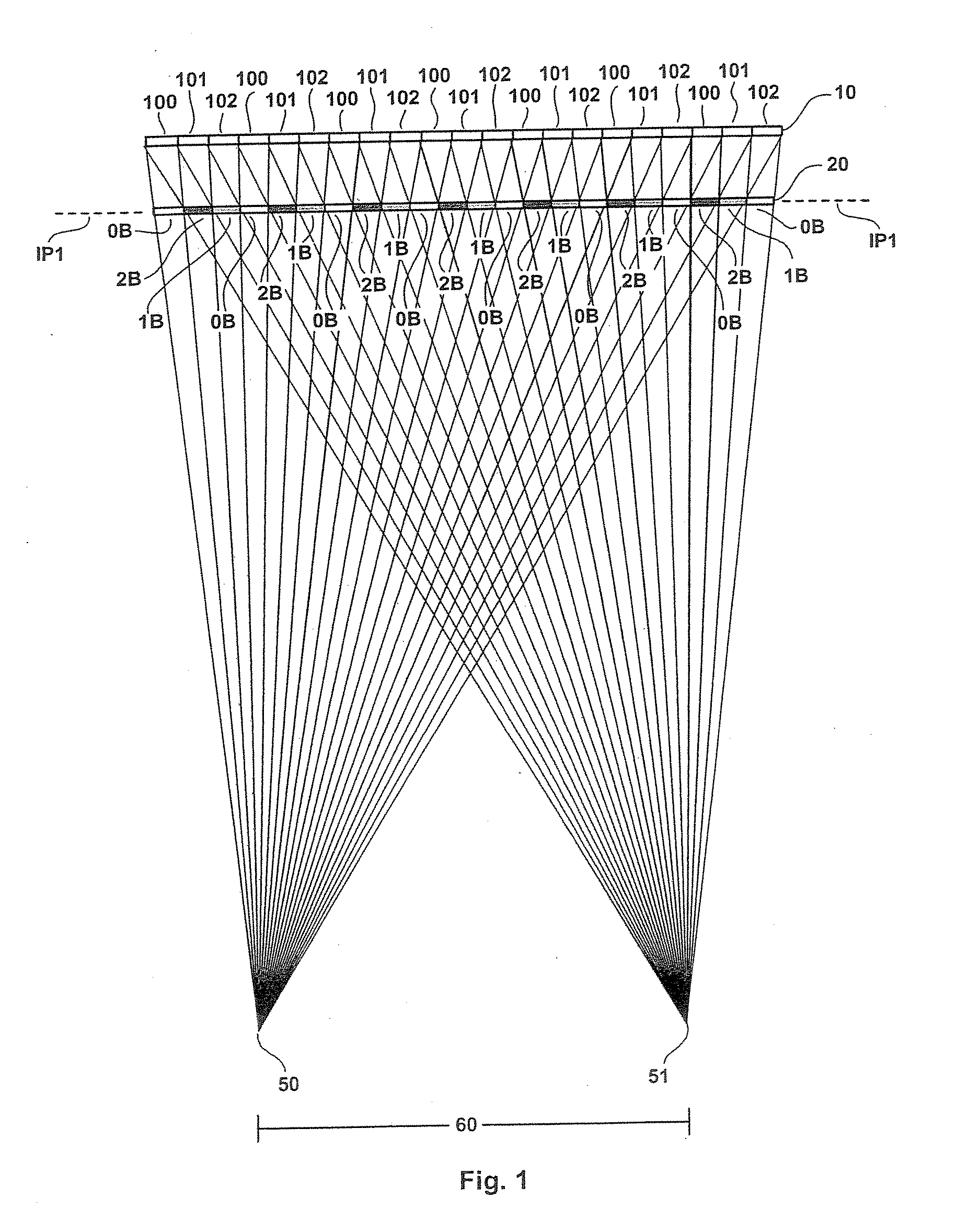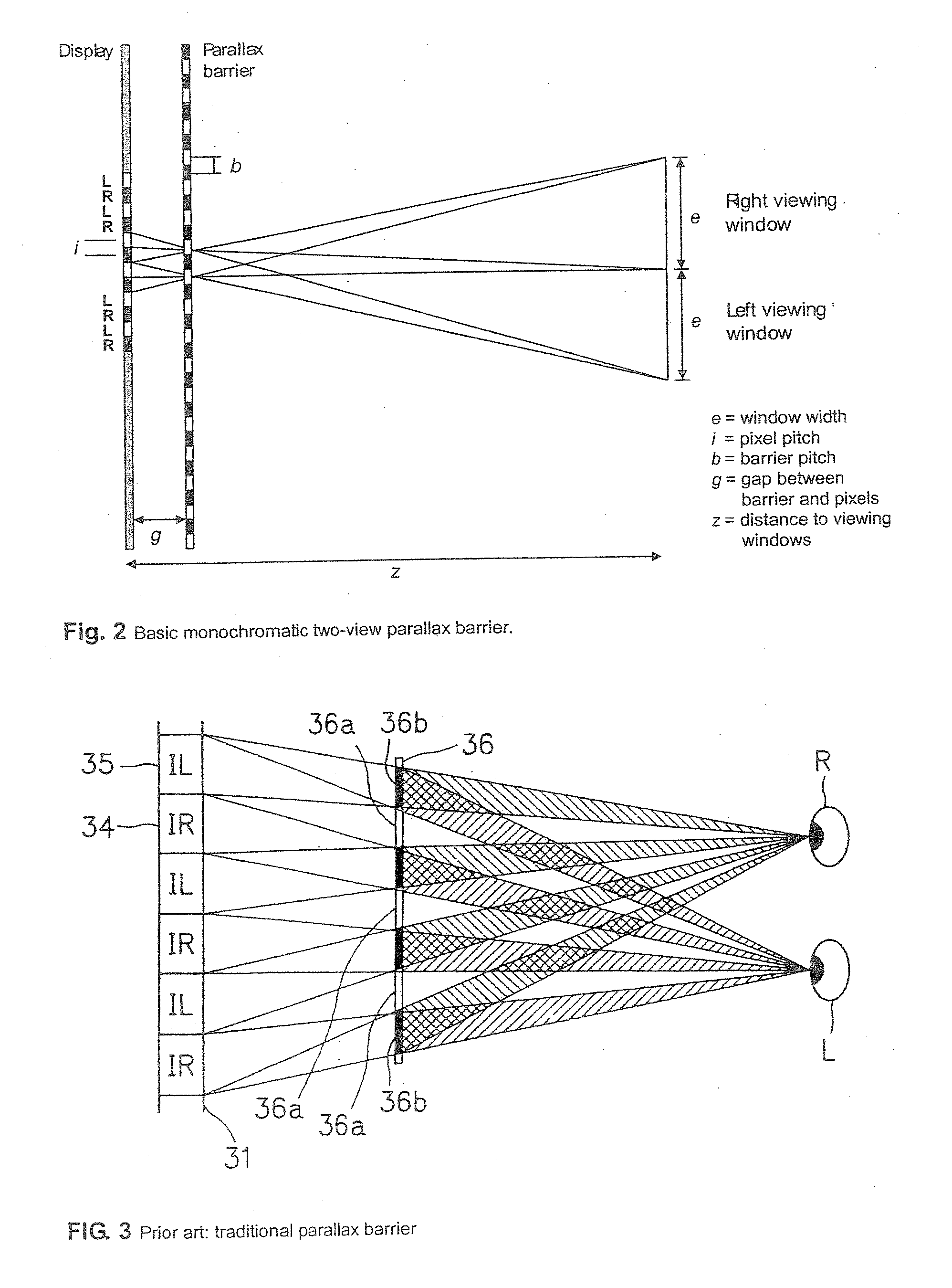Stereoscopic imaging apparatus incorporating a parallax barrier
a parallax barrier and imaging apparatus technology, applied in the field of autostereoscopic viewing systems, can solve the problems of requiring special spectacles, reducing the efficiency of viewing, so as to achieve the effect of increasing efficiency
- Summary
- Abstract
- Description
- Claims
- Application Information
AI Technical Summary
Benefits of technology
Problems solved by technology
Method used
Image
Examples
first embodiment
[0136] With reference now to FIG. 1 of the drawings, there is shown the invention, including a display 10 that is divided into a first region 100 representing a first sub-pixel emitting light of a first spectral range (e.g., red), a second region 101 representing a second sub-pixel emitting light of a second spectral range (e.g., green), and a third region 102 representing a third sub-pixel emitting light of a third spectral range (e.g., blue). Typically, the common display colors of red, green, and blue are referred to as an RGB display.
[0137] Also shown in FIG. 1 is a frontal parallax barrier 20 that is divided into a first light-filtering region 2B, for blocking light emanating from both sub-pixel 100 and sub-pixel 101; a second light-filtering region 1B, for transmitting light emanating from sub-pixel 101 while blocking light emitted from sub-pixel 102; and a third light-filtering region 0B, for transmitting light emanating from both sub-pixel 102 and sub-pixel 100.
[0138] The p...
second embodiment
[0153] With reference now to FIG. 6, there is shown the invention, in which a parallax barrier is placed not at the first intersection plane, but rather at an alternative intersection plane, while still operating at the same viewing distance between the display 10 and the viewer's eyes 50, 51. For instance, as described earlier, the transparent substrate (not shown in FIG. 6) overlaying the pixels of the display 10 can sometimes be thicker than the distance between the pixels and the first intersection plane IP1. Rather than attempt to embed a parallax barrier within the substrate, the embodiment of FIG. 6 instead places the parallax barrier 20 at the second intersection plane IP2. This placement requires a different configuration for the light-filtering regions 2B, 1B, and 0B, as compared to their configuration in the first intersection plane IP1.
[0154] As shown in FIG. 6, the parallax barrier 20 is divided into first light-filtering regions 2B, for blocking light emanating from bo...
third embodiment
[0160] With reference now to FIG. 11, there is shown the invention, in which two separate frontal parallax barriers 20 and 30 are included, for providing anaglyphic auto-stereoscopic viewing. More particularly, the parallax barrier 20 includes light-filtering regions 2Bo1B, for blocking light emanating from the sub-pixels 101 and optionally blocking light emanating from the sub-pixels 100, and the second parallax barrier 30 likewise includes light-filtering regions 2Bo1B, for blocking light emanating from sub-pixels 102 and, optionally, for blocking light emanating from the sub-pixels 100. It should be noted that the two frontal parallax barriers each can be located on its own substrate or, alternatively, can be located on the front and back sides of a single substrate.
[0161] The proper placement of the parallax barrier 20 and its light-filtering regions 2Bo1B ensures that the viewer's left eye 50 cannot see the sub-pixels 101 and that the viewer's right eye 51 cannot see the sub-pi...
PUM
 Login to View More
Login to View More Abstract
Description
Claims
Application Information
 Login to View More
Login to View More - R&D
- Intellectual Property
- Life Sciences
- Materials
- Tech Scout
- Unparalleled Data Quality
- Higher Quality Content
- 60% Fewer Hallucinations
Browse by: Latest US Patents, China's latest patents, Technical Efficacy Thesaurus, Application Domain, Technology Topic, Popular Technical Reports.
© 2025 PatSnap. All rights reserved.Legal|Privacy policy|Modern Slavery Act Transparency Statement|Sitemap|About US| Contact US: help@patsnap.com



